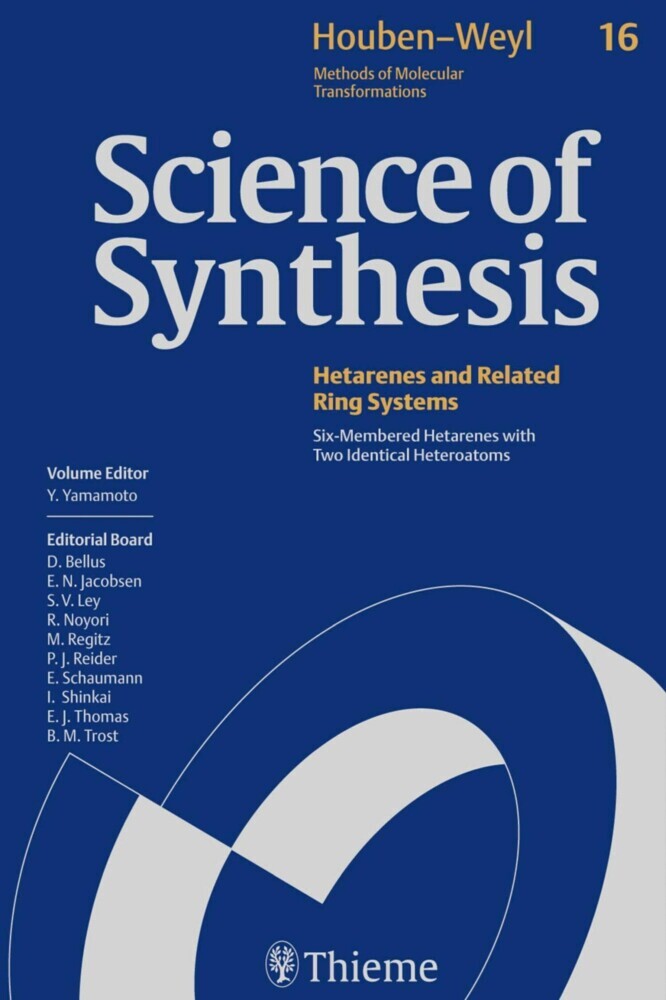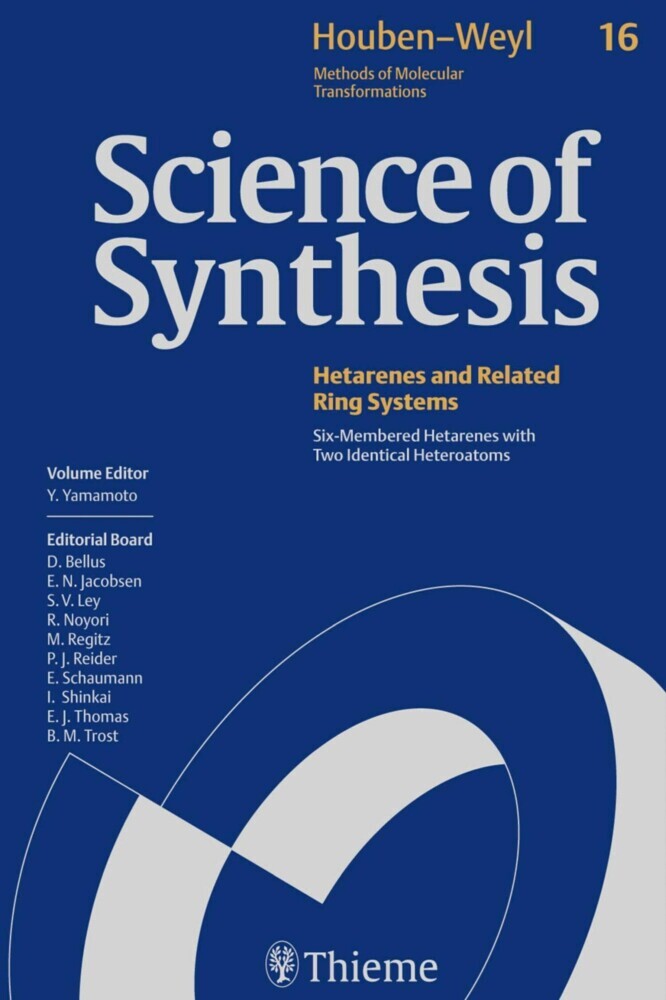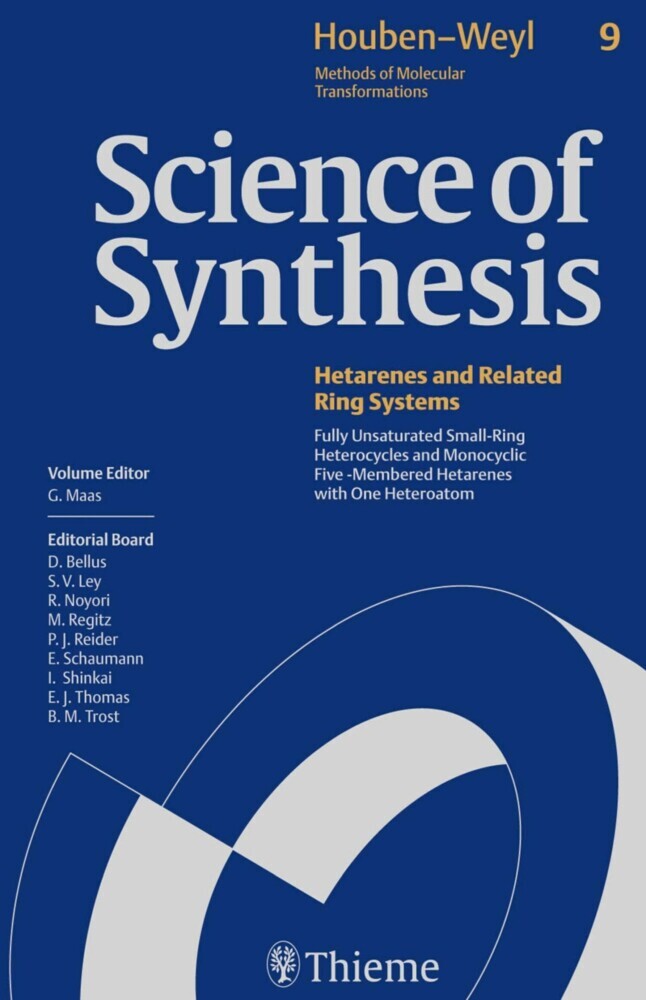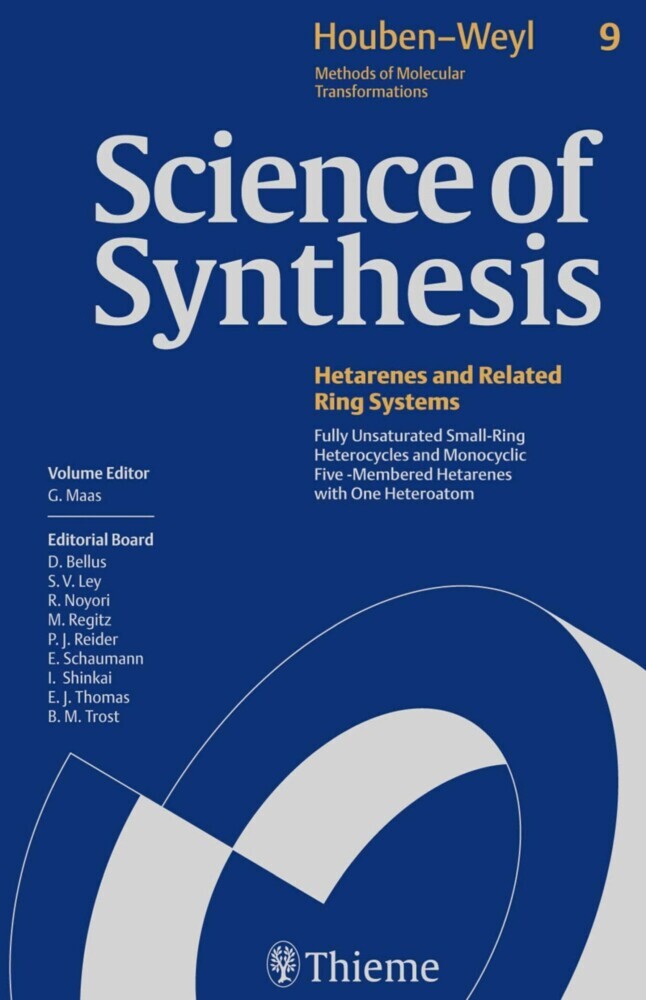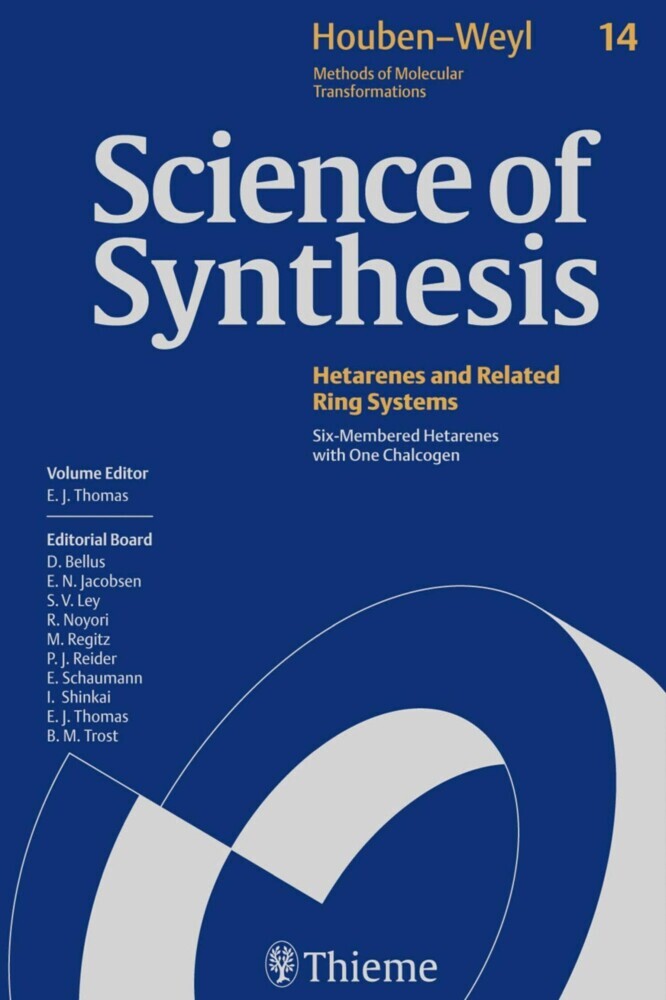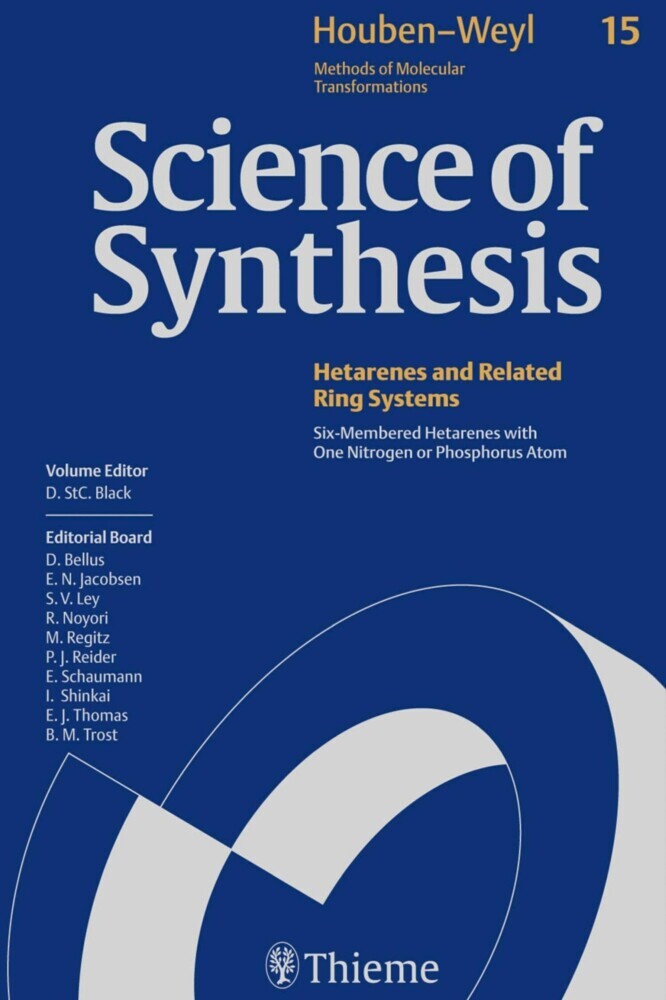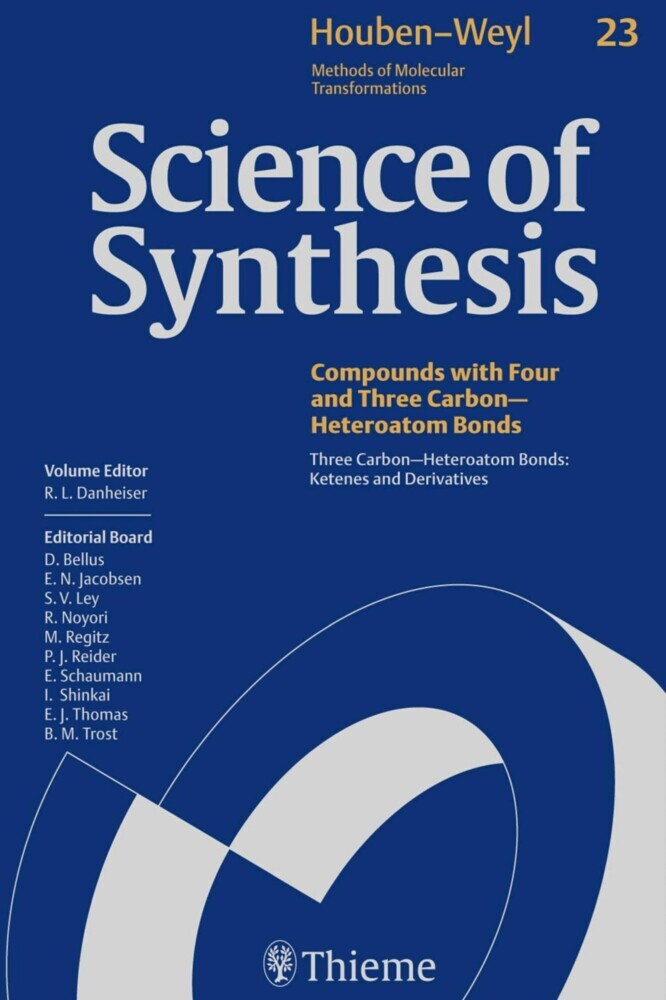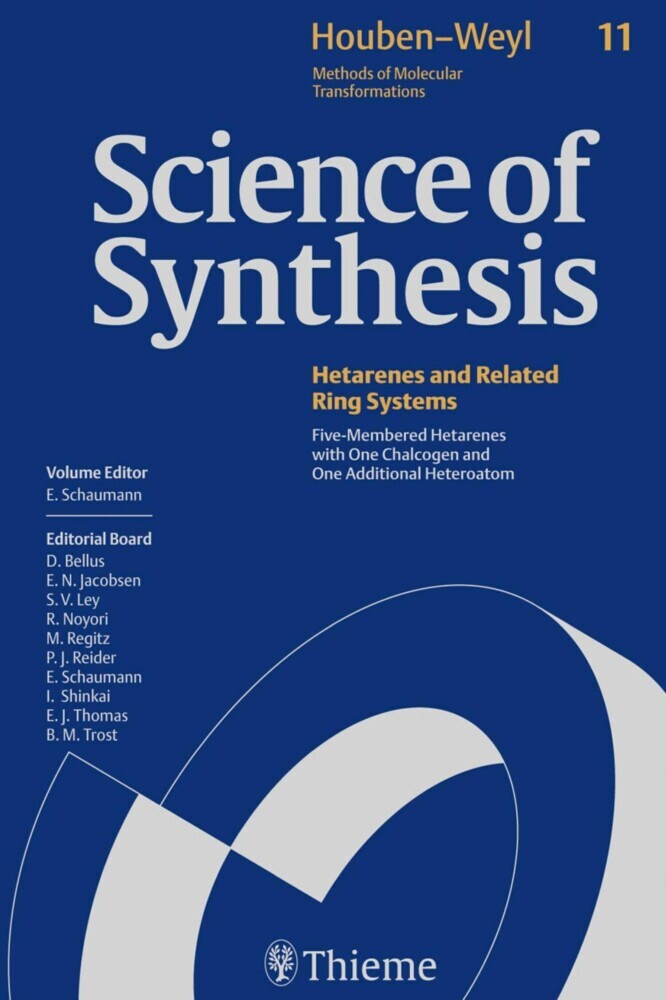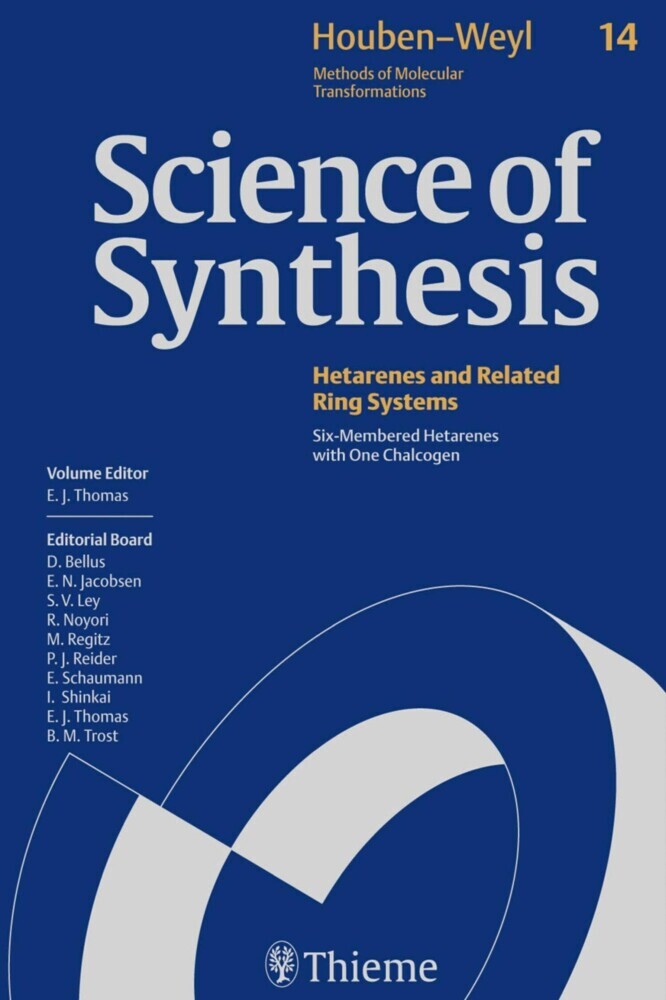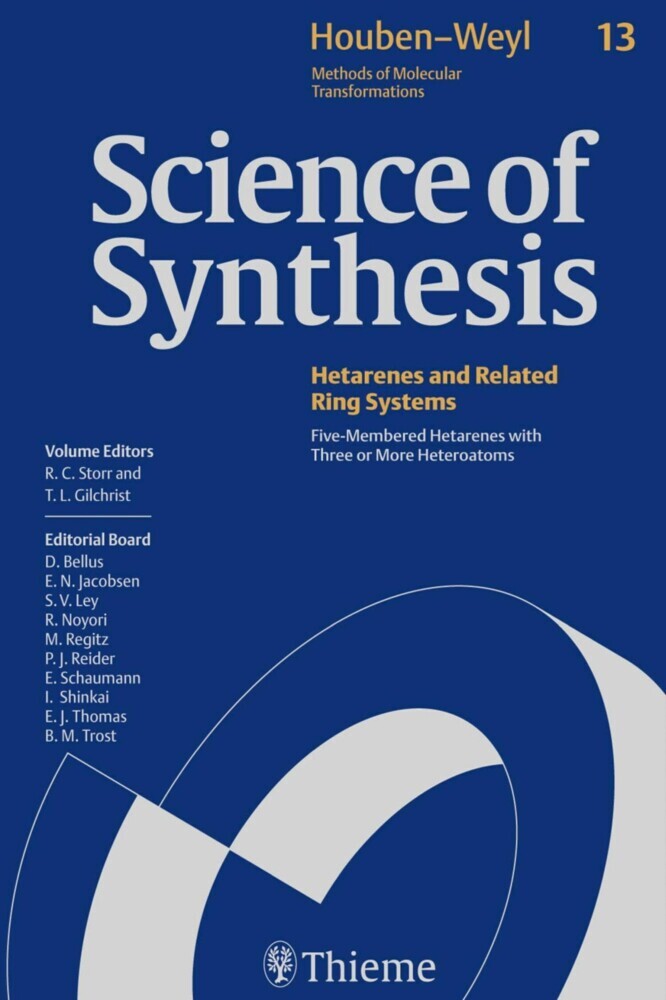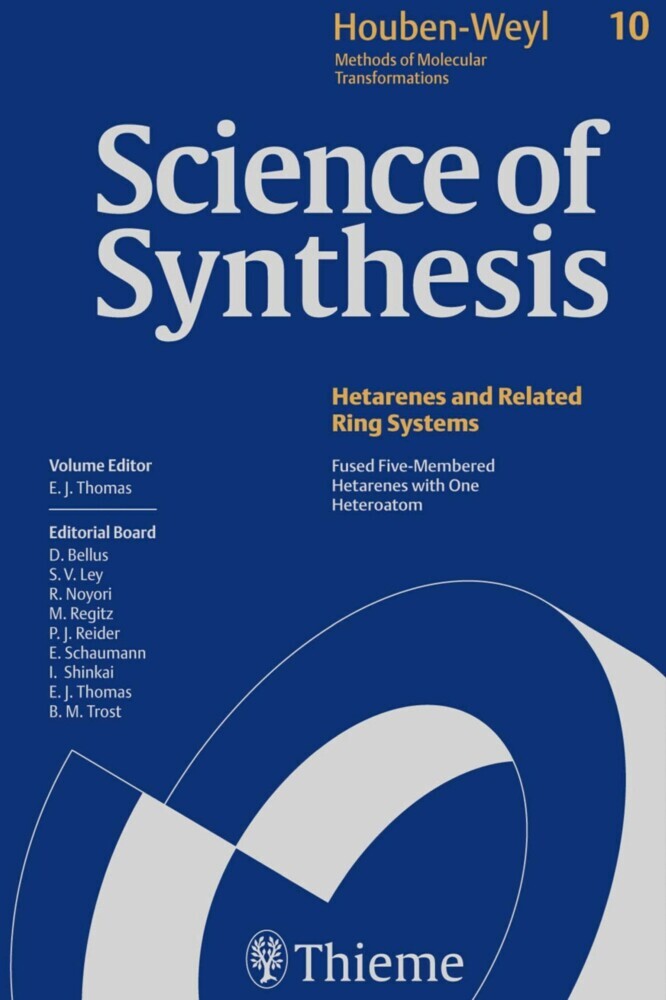Science of Synthesis: Houben-Weyl Methods of Molecular Transformations Vol. 16
Six-Membered Hetarenes with Two Identical Heteroatoms
Science of Synthesis: Houben-Weyl Methods of Molecular Transformations Vol. 16
Six-Membered Hetarenes with Two Identical Heteroatoms
Science of Synthesis: Houben-Weyl Methods of Molecular Transformations is the entirely new edition of the acclaimed reference series Houben-Weyl, the standard synthetic chemistry resource since 1909. This new edition is published in English and will comprise 48 volumes published between the years 2000 and 2008.
Science of Synthesis is a quality reference work developed by a highly esteemed editorial board to provide a comprehensive and critical selection of reliable organic and organometallic synthetic methods. This unique resource is designed to be the first point of reference when searching for a synthesis strategy.
- Contains the expertise of presently 400 leading chemists worldwide
- Critically evaluates the preparative applicability and significance of the synthetic methods
- Discusses relevant background information and provides detailed experimental procedures
For full information on the Science of Synthesis series, visit the Science of Synthesis Homepage
1;Science of Synthesis - Volume 16: Six-Membered Hetarenes with Two Identical Heteroatoms;1 1.1;Title page;3 1.2;Imprint;5 1.3;Preface;6 1.4;Volume Editor's Preface;8 1.5;Overview;10 1.6;Table of Contents;12 1.7;Introduction;66 1.8;16.1 Product Class 1: 1,2-Dioxins and Benzo- and Dibenzo-Fused Derivatives;78 1.9;16.2 Product Class 2: 1,4-Dioxins and Benzo- and Dibenzo-Fused Derivatives;80 1.9.1;16.2.1 Synthesis by Ring-Closure Reactions;83 1.9.1.1;16.2.1.1 By Formation of Two O--C Bonds;83 1.9.1.1.1;16.2.1.1.1 Fragments O--C--C--O and C--C;83 1.9.1.1.1.1;16.2.1.1.1.1 Method 1: 1,4-Benzodioxins by Condensation of Benzene-1,2-diols with an Unsaturated Dielectrophile;83 1.9.1.1.1.2;16.2.1.1.1.2 Method 2: Dibenzo[b,e][1,4]dioxins by Base-Induced Coupling of Benzene-1,2-diols with Activated Chlorobenzenes;84 1.9.1.1.1.3;16.2.1.1.1.3 Method 3: Dibenzo[b,e][1,4]dioxins from Benzene-1,2-diols and 1,2-Dichlorobenzenes Activated by Complexation with Metals;85 1.9.1.1.2;16.2.1.1.2 Fragments O--C--C and O--C--C;86 1.9.1.1.2.1;16.2.1.1.2.1 Method 1: Dibenzo[b,e][1,4]dioxins from 2-Halophenols by Base-Induced Self-Condensation;86 1.9.1.2;16.2.1.2 By Formation of One O--C Bond;87 1.9.1.2.1;16.2.1.2.1 Fragment O--C--C--O--C--C;87 1.9.1.2.1.1;16.2.1.2.1.1 Method 1: Dibenzo[b,e][1,4]dioxins from 2-(2-Halophenoxy)phenolates;87 1.9.2;16.2.2 Aromatization;88 1.9.2.1;16.2.2.1 Method 1: 1,4-Dioxins by Elimination of Halogens or Hydrogen Halides from Polyhalo-1,4-dioxanes;88 1.9.2.2;16.2.2.2 Method 2: 1,4-Dioxins by Elimination of Methanol from 2,5-Dimethoxy-1,4-dioxanes;89 1.9.2.3;16.2.2.3 Method 3: 1,4-Benzodioxins by Elimination of Bromine or Hydrogen Bromide from 2,3-Dibromo-2,3-dihydro-1,4-benzodioxins;90 1.9.2.4;16.2.2.4 Method 4: 1,4-Benzodioxins by Elimination of Water from 2-Hydroxy-2,3-dihydro-1,4-benzodioxins;91 1.9.3;16.2.3 Synthesis by Substituent Modification;92 1.9.3.1;16.2.3.1 Substitution of Existing Substituents;92 1.9.3.1.1;16.2.3.1.1 Of Hydrogen;92 1.9.3.1.1.1;16.2.3.1.1.1 Method 1: Friedel--Crafts Acylation of 1,4-Benzodioxins Bearing an Electron-Withdrawing Substituent at the 2-Position;92 1.9.3.1.1.2;16.2.3.1.1.2 Method 2: Friedel--Crafts Acylation of Dibenzo[b,e][1,4]dioxins;92 1.9.3.1.1.3;16.2.3.1.1.3 Method 3: Lewis Acid Catalyzed Acylation of 2-(Trimethylsilyl)-1,4-benzodioxin;93 1.9.3.1.1.4;16.2.3.1.1.4 Method 4: Polyhalogenated Dibenzo[b,e][1,4]dioxins by Direct Halogenation of Dibenzo[b,e][1,4]dioxins with Chlorine or Bromine;93 1.9.3.1.1.4.1;16.2.3.1.1.4.1 Variation 1: Halogenation with Inorganic Chlorides or Bromides;94 1.9.3.1.1.5;16.2.3.1.1.5 Method 5: Nitration of Dibenzo[b,e][1,4]dioxins;95 1.9.3.1.2;16.2.3.1.2 Of Metals;95 1.9.3.1.2.1;16.2.3.1.2.1 Method 1: 2-Substituted 1,4-Benzodioxins from 2-Lithio-1,4-benzodioxins;95 1.9.3.1.2.2;16.2.3.1.2.2 Method 2: 1-Monosubstituted and 1,9-Disubstituted Dibenzo[b,e][1,4]dioxins from 1-Lithio- or 1,9-Dilithiodibenzo[b,e][1,4]dioxin;97 1.9.3.1.2.3;16.2.3.1.2.3 Method 3: 5-Substituted 1,4-Benzodioxins via Lithiation of .6-Chromium(0) Complexes of 1,4-Benzodioxins;98 1.9.3.1.2.4;16.2.3.1.2.4 Method 4: Metal-Catalyzed Coupling of 1,4-Benzodioxin-2-ylmagnesium Bromide with Halides;98 1.9.3.1.3;16.2.3.1.3 Of Heteroatoms;98 1.9.3.1.3.1;16.2.3.1.3.1 Method 1: Metal-Catalyzed Coupling of 2-Bromo-1,4-benzodioxin with Organometallics;98 1.9.3.1.3.2;16.2.3.1.3.2 Method 2: Sandmeyer Reaction of Polychlorodibenzo[b,e][1,4]dioxinamines;99 1.9.3.2;16.2.3.2 Modification of Substituents;100 1.9.3.2.1;16.2.3.2.1 Method 1: Dibenzo[b,e][1,4]dioxinamines by Reduction of Nitrodibenzo[b,e][1,4]dioxins;100 1.9.3.2.2;16.2.3.2.2 Method 2: 1,4-Dioxins by Isomerization of Exocyclic Double Bonds of Substituted 1,4-Dioxanes;100 1.9.3.2.3;16.2.3.2.3 Method 3: Diels--Alder Addition of 2,3-Bis(methylene)-2,3-dihydro-1,4-dioxin with Dienophiles;101 1.10;16.3 Product Class 3: 1,2-Dithiins;104 1.10.1;16.3.1 Synthesis by Ring-Closure Reactions;106 1.10.1.1;16.3.1.1 By F
Bellus, Daniel
Yamamoto, Yoshinori
| ISBN | 9783131718815 |
|---|---|
| Artikelnummer | 9783131718815 |
| Medientyp | E-Book - PDF |
| Copyrightjahr | 2014 |
| Verlag | Georg Thieme Verlag KG |
| Umfang | 1568 Seiten |
| Sprache | Englisch |
| Kopierschutz | Digitales Wasserzeichen |

